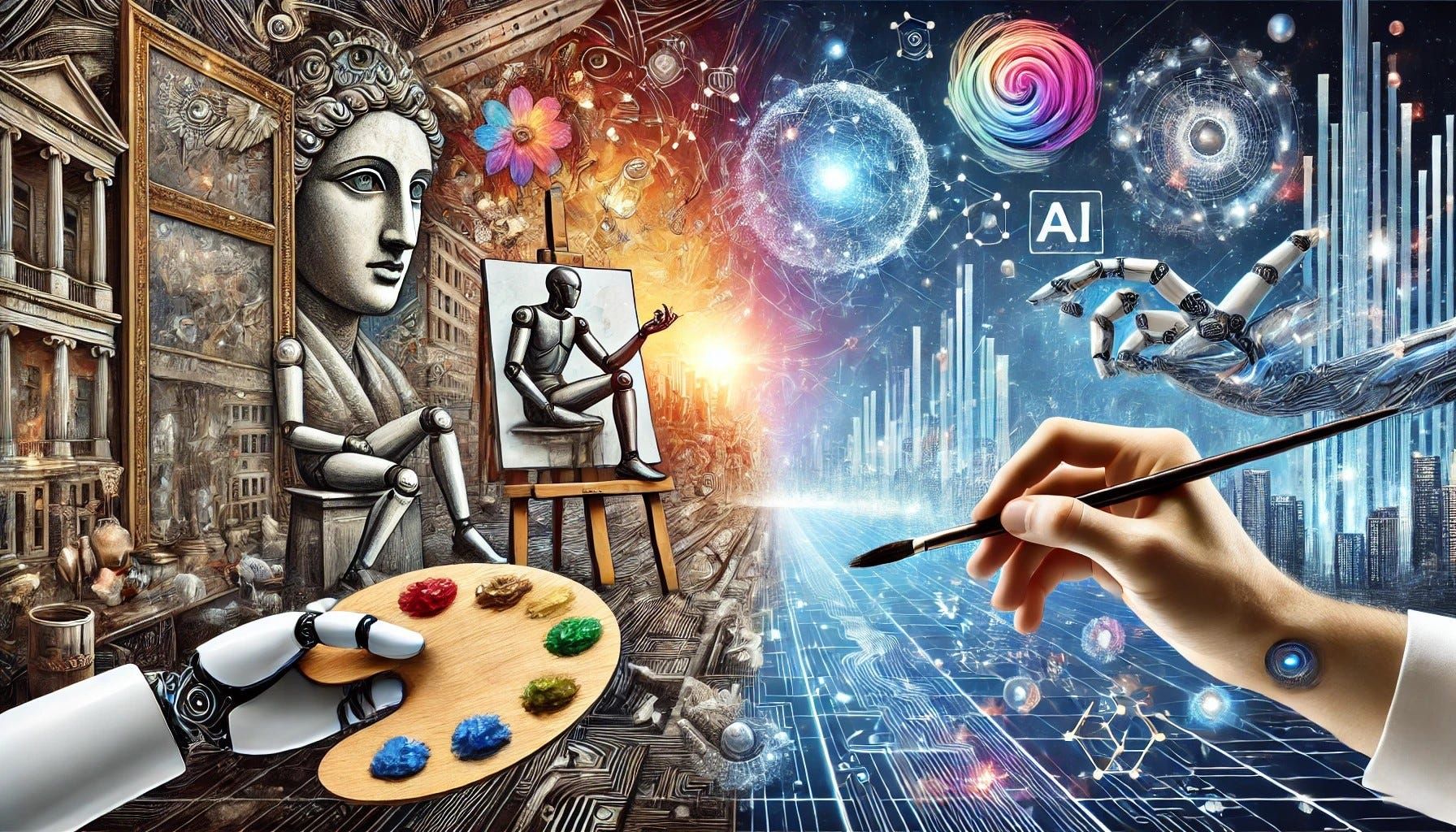AI art software and AI music generators emerged from advancements in machine learning, neural networks, and computer vision. Generative AI models such as diffusion tools and transformer-based frameworks allow users to create visuals, audio, and design concepts in minutes. This shift is reshaping how people approach creativity, enabling both professionals and beginners to explore new possibilities.
AI creative tools do not replace human creativity. Instead, they act as extensions helping users overcome creative blocks, analyze patterns, and bring abstract ideas to life. Their growth reflects a broader transformation where technology and imagination increasingly blend in modern digital culture.
Importance
AI-driven creative tools are becoming important across several fields because they support faster production, flexible experimentation, and better accessibility.
They matter today for several key reasons:
They expand creative possibilities
Generative AI platforms can recreate artistic styles, generate new patterns, or suggest musical arrangements that a user might not imagine independently.
They support modern workflows
Graphic designers, marketers, educators, and content creators now rely on AI design tools to streamline repetitive tasks such as resizing images, generating layouts, or producing alternate versions.
They improve accessibility
Individuals without formal training can now explore art, digital illustration, video editing, or music creation using AI creative platforms that simplify complex steps.
They solve common challenges, such as:
-
creative block or lack of inspiration
-
long production timelines
-
difficulty producing variations at scale
-
limitations in technical skills
-
need for quick visualization for presentations or prototypes
Who it affects:
-
digital artists and illustrators
-
musicians, composers, and producers
-
graphic and UI/UX designers
-
educators and students
-
marketing teams
-
small businesses and freelancers
-
researchers working with generative AI
As AI continues shaping digital creativity, understanding these tools and their impact has become essential for anyone involved in artistic or design-based work.
Recent Updates
The past year has seen rapid improvements in AI content generation and creative technology. Several key developments have shaped the landscape:
Advances in image generation models (2024–2025)
Diffusion models and multimodal AI engines have become more detailed, faster, and capable of producing higher-resolution outputs. The rise of improved transformer-based architectures has strengthened AI art generation and visual editing.
Growth of AI music generation tools (2024)
AI music composition platforms expanded their ability to create stems, harmonies, and genre-specific arrangements. By late 2024, several tools integrated real-time sound editing and voice modeling.
Enhanced design automation
AI design tools began supporting layout suggestions, brand-style matching, and automated formatting. These updates appeared across multiple platforms throughout 2024 and early 2025.
Ethical and attribution discussions (2024–2025)
Creators and organizations have increasingly focused on transparency, data sources, and responsible AI use. Many platforms introduced clearer labeling and content usage policies.
Cross-platform integrations
In 2024 and 2025, AI creative engines became more tightly integrated into major software ecosystems, allowing designers and musicians to work across multiple applications without switching tools.
These updates show that AI creative technologies are not static—they continue evolving, influencing workflows and opening new creative possibilities.
Laws or Policies
The use of AI creative tools is shaped by regulations and guidelines meant to support responsible development. While policies differ across regions, several key areas influence how creators use AI art software, AI design platforms, and AI music tools:
AI governance frameworks
Many countries have introduced guidelines focusing on transparency, privacy, and safety in AI-generated content. These frameworks encourage responsible development without restricting creativity.
Copyright considerations
AI-generated content often raises questions about originality and intellectual property. Global authorities continue examining how copyright applies to outputs created with assistance from generative AI models.
Creators are encouraged to check attribution rules, especially when using external datasets or style-based outputs.
Data usage rules
Regulations now emphasize clarity regarding training data. Many AI platforms have added options that allow users to choose whether their content is used for future model training.
Ethical content guidelines
Most AI creative tools follow community-based policies that restrict harmful or misleading content creation. These standards ensure that AI-generated visuals, audio, and designs remain safe and appropriate for general audiences.
Overall, policies focus on transparency, user control, and ethically aligned development rather than limiting artistic use.
Tools and Resources
Below is a helpful overview of commonly used AI creative tools, platforms, and resources across art, music, and design. These support ideation, editing, visualization, and creative exploration.
AI Tools for Art and Illustration
-
AI art generation platforms
-
Generative image editing tools
-
Digital illustration assistants
-
Style transformation engines
-
Graphic layout suggestion tools
AI Tools for Music and Audio
-
AI music composition platforms
-
Audio enhancement and mixing tools
-
Stem separation engines
-
Voice modeling tools
-
Sound design suggestion systems
AI Tools for Design
-
AI-powered design layout generators
-
Automated branding and typography tools
-
UI/UX pattern recommendation engines
-
Image upscaling and vectorization tools
-
Visualization and mood-board generators
Learning Resources
-
Online tutorials on generative AI
-
AI model documentation and guides
-
Research papers on creative AI
-
Communities focused on digital creativity
Comparison Table: Creative Use Cases and Tool Types
| Creative Need | Example AI Tool Type | Typical Output |
|---|---|---|
| Visual art creation | AI art software, image generators | Illustrations, concept art |
| Music creation | AI music tools, composition engines | Melodies, beats, harmonies |
| Design automation | AI design platforms | Layouts, templates, UI elements |
| Visual editing | AI editing systems | Enhanced images, retouched visuals |
| Idea exploration | Generative AI models | Style variations, concept drafts |
These resources help creators discover new approaches and improve the speed and flexibility of digital production.
FAQs
1. What are AI creative tools used for?
They support tasks such as illustration, music composition, photo editing, design layout, and idea generation by using algorithms and generative models to assist or automate creative steps.
2. Do AI tools replace the need for artistic skills?
No. They act as supportive instruments. Artistic knowledge still plays a major role in shaping ideas, selecting styles, refining outputs, and making creative decisions.
3. Are AI-generated visuals or music considered original?
This depends on local regulations and attribution rules. Many jurisdictions are still evaluating how originality applies to AI-assisted work, so creators should stay aware of evolving guidelines.
4. Can beginners use AI creative tools without technical expertise?
Yes. Most modern AI platforms provide intuitive interfaces designed for general users, making it easier for beginners to explore art, music, and design.
5. What should creators know before using AI models?
They should understand usage policies, data sources, copyright rules, and how their content may be used for training or processing by the platform.
Conclusion
AI creative tools are reshaping art, music, and design by offering new ways to explore ideas and simplify production. These technologies support both skilled professionals and beginners who want to expand their creative capabilities. With continued improvements in generative AI models, users now have access to more powerful platforms for illustration, sound creation, and design automation.
Although the tools evolve quickly, they remain grounded in principles of transparency, responsible development, and creative empowerment. By understanding recent advancements, regulations, and the wide range of available resources, creators can confidently navigate the growing world of AI-powered creativity and use it to enhance their artistic journeys.





